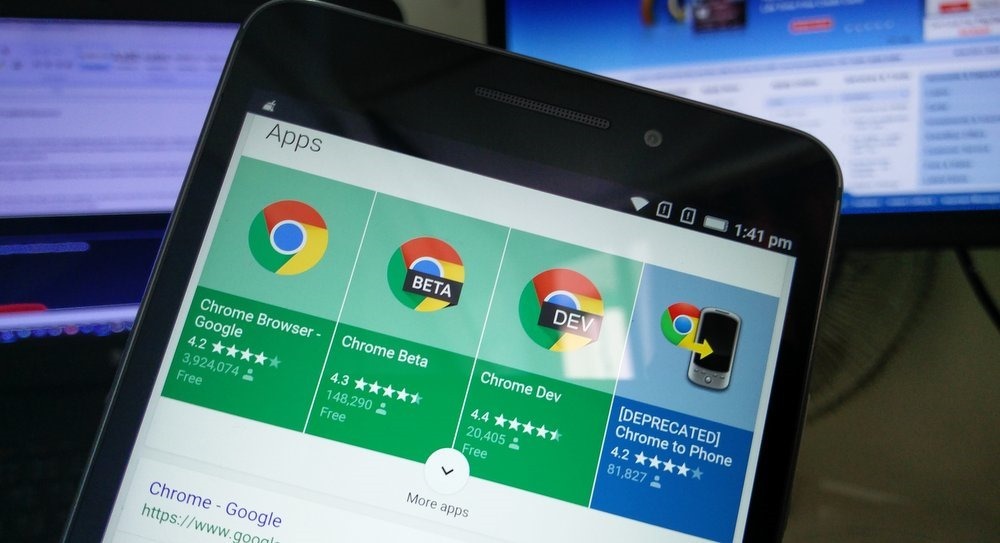Google Chrome for Android Now Supports Bluetooth Enabled Beacons!

Google’s Physical Web is an excellent approach to solving today’s problems in Android: Unregulated growth of Android through multiple OEMs. With the boom in smartphone industry, it is not possible to create an application specific for every device, and there are expectations from the users to have the best user experience on their phones.
The same issue is being solved by Google through the Physical Web, which allows smartphones to interact with any device without having to download an app for it.
An extremely optimistic experiment was started last year to create an ecosystem where any device can interact with any other device without the need of applications. On the Chromium Blog today, Google has shared an exciting piece of news that Chrome for Android will now get support for Eddystone, the cross-platform interaction medium introduced to allow interaction between bluetooth enabled devices.
What is Physical Web and why do I need it?
Google’s mission is to allow interaction between two inanimate devices through wireless signals. It can be in any form of information exchange or adding some new information to the devices. It is an open-source standard that can be used by everyone, so as to build a new set of services for everyone these days.
It can be used to perform a variety of activities in any part of the world. Let’s say you’re at the bus stop waiting for your bus to arrive, but do not know the route it is going to take. Just enable physical web from your phone and you’ll get the information from a device at the bus stop. Similarly, it can be used to exchange information at a supermarket to get a download of various items you could buy and their prices, all from the press of a button.
If you think about it, you will not have to download an application for bus routes in India, or download an application of your favourite departmental store to view the products you want to buy. This is one of the best ways of standardizing the operating system across phones and wirelessly transmit data required at that location. It adds a physical dimension to the web by simulating interaction between two physical devices.
Details about Eddystone capabilities in Android
Currently in beta mode, the feature will be added in Chrome 49 to enable interactions with Bluetooth beacons. The first time a user gets in contact with a beacon, or anywhere nearby it, Chrome for Android will pop-up a request for connection with Physical Web. If accepted, the beacon will give information about other beacons present in nearby locations.
The beacon is a bluetooth transmitter that connects to your phone’s bluetooth and share information through it. The blog reports that Radius Networks that develops these beacons, were placed everywhere at the Consumer Electronics Show to inform the visitors about the showrooms. Considering this is open source, a wide variety of electronics manufacturers should be coming out with their versions to simplify information transfer.
How will beacons fare in India?
So far, the beacons have only be employed in the US since most of the silicon valley startups have started recognizing the employability of this technology in our day to day lives. One doesn’t need to worry about the type of smartphone being used, as long as it can receive notifications from beacon devices using bluetooth.
In India, I see a rapid development if initiated under the Digital India campaign, for it will allow information sharing from any terminal in the country. I will be over-optimistic if I say it will be a huge success in the country, because even now the infrastructural problems have not been completely eliminated. In fact, traffic congestions and pollution have yet to be tackled in large cities, where this technology will be implemented first.
Even in that case, Eddystone will help us in various places like bus stops, airports, train stations and taxi spots to be informed of the arrival and departure timings. I also see these being installed in areas like parks and shopping malls to give visitors information about activities in and around the borders.
Overall, this can create millions of possibilities to help our smartphone devices interact with the environment around us, merely through inanimate objects. But will the public embrace this change? Can we be sure these devices are protected from damage or theft in a country where pothole covers are stolen? If all goes well and Narendra Modi takes us to a level he has envisioned, then we can quite positive about this innovation.

[…] […]